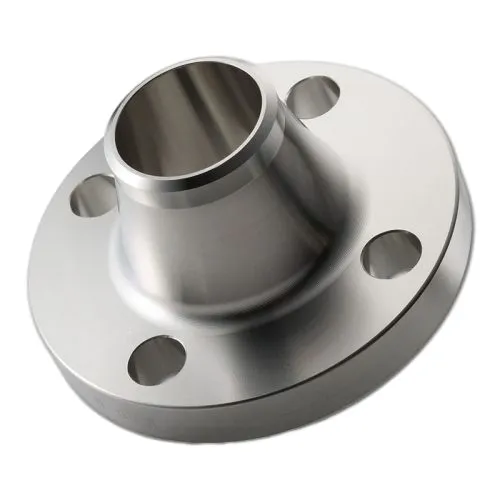-
Cangzhou Yulong Steel Co., Ltd.
-
Phone:
+86 13303177267 -
Email:
admin@ylsteelfittings.com
- English
- Arabic
- Italian
- Spanish
- Portuguese
- German
- kazakh
- Persian
- Greek
- French
- Russian
- Polish
- Thai
- Indonesian
- Vietnamese
- Zulu
- Korean
- Uzbek
- Hindi
- Serbian
- Malay
- Ukrainian
- Gujarati
- Haitian Creole
- hausa
- hawaiian
- Hebrew
- Miao
- Hungarian
- Icelandic
- igbo
- irish
- Japanese
- Javanese
- Kannada
- Khmer
- Rwandese
- Afrikaans
- Albanian
- Amharic
- Armenian
- Azerbaijani
- Basque
- Belarusian
- Bengali
- Bosnian
- Bulgarian
- Catalan
- Cebuano
- China
- China (Taiwan)
- Corsican
- Croatian
- Czech
- Danish
- Esperanto
- Estonian
- Finnish
- Frisian
- Galician
- Georgian
- Kurdish
- Kyrgyz
- Lao
- Latin
- Latvian
- Lithuanian
- Luxembourgish
- Macedonian
- Malgashi
- Malayalam
- Maltese
- Maori
- Marathi
- Mongolian
- Myanmar
- Nepali
- Norwegian
- Norwegian
- Occitan
- Pashto
- Dutch
- Punjabi
- Romanian
- Samoan
- Scottish Gaelic
- Sesotho
- Shona
- Sindhi
- Sinhala
- Slovak
- Slovenian
- Somali
- Sundanese
- Swahili
- Swedish
- Tagalog
- Tajik
- Tamil
- Tatar
- Telugu
- Turkish
- Turkmen
- Urdu
- Uighur
- Welsh
- Bantu
- Yiddish
- Yoruba

Nov . 10, 2024 04:28 Back to list
Understanding DIN Flange PN16 Specifications and Applications in Industrial Settings
Understanding DIN Flange PN16 A Comprehensive Guide
Flanges are critical components in piping systems, used to connect various pipes, valves, pumps, and other equipment to form a tight seal and facilitate the flow of fluids. Among the many standards available, the DIN (Deutsches Institut für Normung) flange has gained significant recognition in various industrial applications, particularly in Europe. This article delves into the specifics of DIN flanges, focusing particularly on the PN16 rating, which is prevalent in many engineering and industrial contexts.
What is a DIN Flange?
The term DIN flange refers to flanges that adhere to the German standard specification laid out by the Deutsches Institut für Normung. These standards dictate the dimensions, pressure ratings, and other specifications for flanges used in piping systems. DIN flanges come in various sizes and pressure ratings, including PN (Pressure Nominal) ratings that indicate the maximum pressure the flange can withstand at a specified temperature.
What Does PN16 Mean?
The PN in the designation PN16 stands for Pressure Nominal. The number following PN indicates the maximum allowable pressure in bars that the flange can handle at 20 degrees Celsius. Thus, a PN16 flange can withstand a maximum pressure of 16 bars, which is equivalent to approximately 232 psi. This makes PN16 flanges suitable for a variety of medium-pressure applications commonly found in industries such as water treatment, chemical processing, and HVAC systems.
Dimensions and Standards
DIN flanges are categorized by several standard types, each with its unique dimensions and specifications. One of the most common DIN flange standards is DIN 2576, which outlines the dimensions for standard slip-on flanges. The dimensions for PN16 flanges typically include parameters like outer diameter, thickness, and bolt hole specifications.
For example, a DN100 PN16 slip-on flange will have a nominal diameter of 100 mm, while the bolt holes will match specific standards that make it compatible with matching pipes and fittings. The surface finish, which can either be smooth or raised face, and the material of the flange (such as stainless steel, carbon steel, or alloy) also play a significant role in determining its suitability for different applications.
Advantages of Using DIN Flange PN16
din flange pn16

1. Standardization The main advantage of using DIN flanges lies in their standardization. Since they conform to set specifications, they can be easily incorporated into existing systems without compatibility issues.
2. Versatility PN16 flanges can be used in various applications due to their ability to handle moderate pressures. This versatility makes them a popular choice across industries.
3. Ease of Installation DIN PN16 flanges are designed for straightforward installation. Whether they are slip-on, weld neck, or blind flanges, maintenance and replacement require minimal effort, thus reducing downtime.
4. Robust Construction Made typically from high-quality materials, DIN PN16 flanges are built to last. Their ability to sustain required pressure and temperature ratings ensures that they provide reliable service over time.
Applications of DIN Flange PN16
DIN Flange PN16 is extensively used in various industries, including
- Water Supply Systems Used for connecting pipes and valves in municipal water distribution systems. - Chemical Industry Critical in transporting various chemicals securely, thanks to their pressure handling capabilities. - HVAC In heating, ventilation, and air conditioning systems, PN16 flanges play a vital role in connecting ducts and equipment. - Manufacturing Many industrial plants rely on these flanges for their piping systems, ensuring operational efficiency.
Conclusion
DIN Flange PN16 is a reliable and versatile component essential for many industrial applications. Understanding its specifications, applications, and advantages allows engineers and project managers to make informed decisions when selecting flanges for their projects. By adhering to industry standards, these flanges ensure compatibility and efficacy, making them invaluable in modern engineering and manufacturing processes. Whether you're involved in water treatment, chemical processing, or HVAC systems, PN16 flanges represent a trusted choice for effective fluid management.
Latest news
-
ANSI 150P SS304 SO FLANGE
NewsFeb.14,2025
-
ASTM A333GR6 STEEL PIPE
NewsJan.20,2025
-
ANSI B16.5 WELDING NECK FLANGE
NewsJan.15,2026
-
ANSI B16.5 SLIP-ON FLANGE
NewsApr.19,2024
-
SABS 1123 FLANGE
NewsJan.15,2025
-
DIN86044 PLATE FLANGE
NewsApr.19,2024
-
DIN2527 BLIND FLANGE
NewsApr.12,2024
-
JIS B2311 Butt-Welding Fittings LR/SR 45°/90° /180°Seamless/Weld
NewsApr.23,2024











